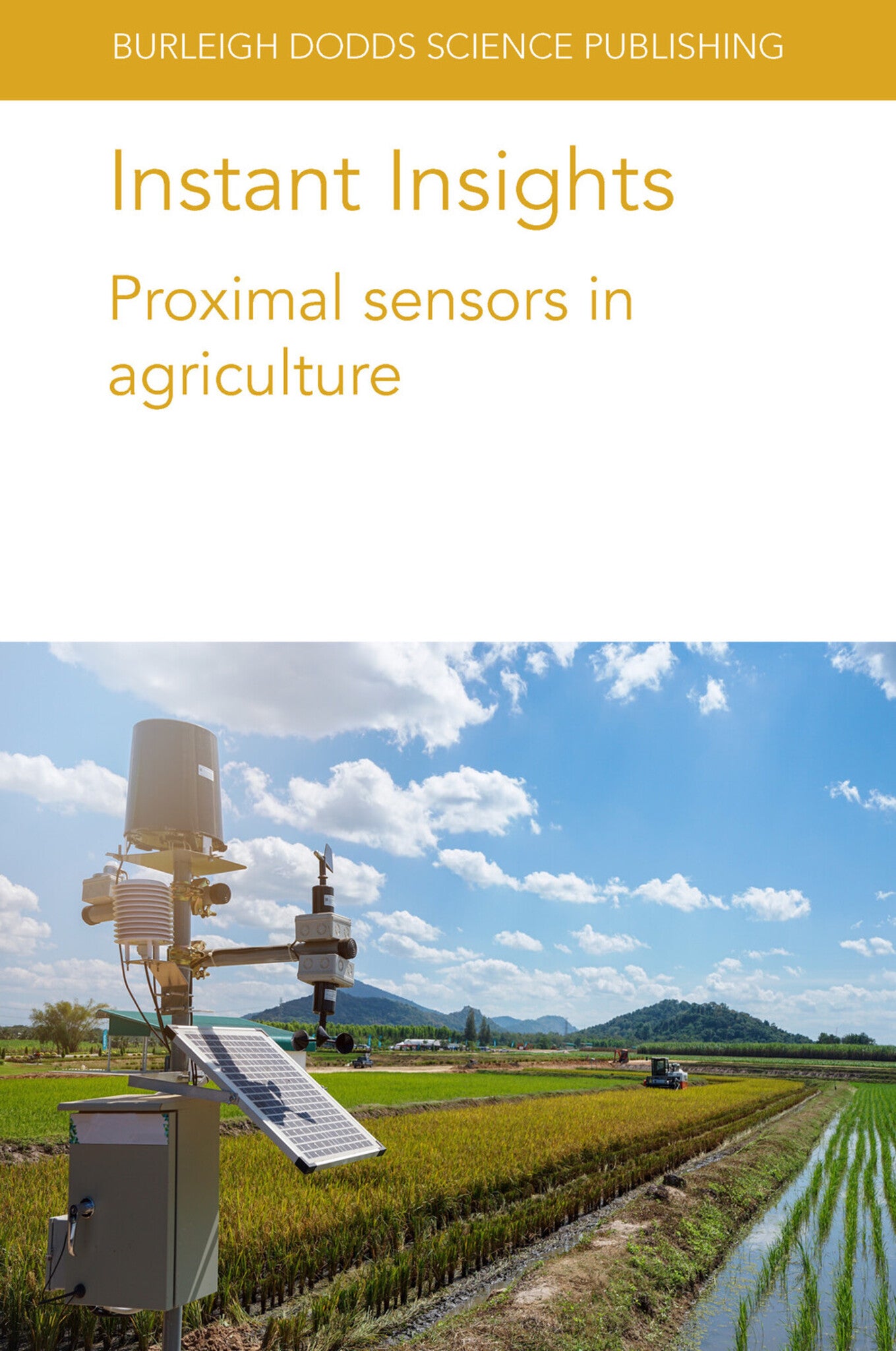We're sorry. An error has occurred
Please cancel or retry.
Instant Insights: Proximal sensors in agriculture

Some error occured while loading the Quick View. Please close the Quick View and try reloading the page.
Couldn't load pickup availability
- Format:
-
23 May 2023

This collection features four peer-reviewed reviews on proximal sensors in agriculture.
The first chapter addresses the use of proximal sensors to evaluate crop health and performance throughout the growing season. The chapter reviews the evolution of crop sensors, as well as the issues and limitations facing further development, including the need to develop sensors equipped with the ability to detect stresses other than nitrogen.
The second chapter reviews recent advances in using proximal sensors to detect crop health status in horticultural crops. The chapter considers the application of sensors to detect micro-environmental parameters linked to pathogen lifecycles which can then be utilised to predict disease risk.
The third chapter reviews advances in using proximal spectroscopic sensors to assess soil health. It assesses principles and technologies, key properties measured, advantages and disadvantages together with applications in improving soil management.
The final chapter discusses advances in the use of proximal sensor fusion and multi-sensor platforms for improved crop management. The chapter considers the combination of remote sensing from satellites and weather station data as the basis for crop growth models and explores the benefits of utilising a selection of tools to investigate yield prediction.

TECHNOLOGY & ENGINEERING / Agriculture / Agronomy / Crop Science, Agronomy and crop production, TECHNOLOGY & ENGINEERING / Agriculture / Agronomy / Soil Science, TECHNOLOGY & ENGINEERING / Agriculture / Sustainable Agriculture, TECHNOLOGY & ENGINEERING / Agriculture / Irrigation, Sedimentology and pedology, Irrigation and water management, Sustainable agriculture, Soil science and management

Chapter 1 - Proximal crop sensing: Richard B. Ferguson, University of Nebraska-Lincoln, USA; 1 Introduction
2 The evolution of crop sensors 3 Current issues in sensor development 4 Case studies 5 Conclusion: sustainability and environmental implications 6 Future trends for research 7 Where to look for further information 8 References
Chapter taken from: Stafford, J. (ed.), Precision agriculture for sustainability, Burleigh Dodds Science Publishing, Cambridge, UK, 2018, (ISBN 978 1 78676 204 7)
Chapter 2 - Advances in proximal sensors to detect crop health status in horticultural crops: Catello Pane, CREA – Research Centre for Vegetable and Ornamental Crops, Italy; 1 Introduction
2 Optoelectronic devices for detecting disease in vegetable plants 3 Sensors for the detection of micro-environmental parameters related to disease outbreaks 4 Case study: digital and mechatronic applications on baby leaf vegetable quality chain 5 Conclusion 6 Where to look for further information 7 References
Chapter taken from: Collier, R. (ed.), Improving integrated pest management in horticulture, Burleigh Dodds Science Publishing, Cambridge, UK, 2022, (ISBN 978 1 78676 753 0)
Chapter 3 - Advances in using proximal spectroscopic sensors to assess soil health: Kenneth A. Sudduth, USDA-ARS, USA;
Chapter taken from: Lobsey, C. and Biswas, A. (eds.), Advances in sensor technology for sustainable crop production, Burleigh Dodds Science Publishing, Cambridge, UK, 2023, (ISBN 978 1 78676 977 0)
Chapter 4 - Advances in proximal sensor fusion and multi-sensor platforms for improved crop management: David W. Franzen and Anne M. Denton, North Dakota State University, USA; 1 Introduction
2 Use of plant height and proximal/remote sensing 3 Sensors and weather data 4 Multi-sensor approaches 5 Statistical tools for fusing multi-sensor data 6 Conclusions and future trends 7 References
Chapter taken from: Lobsey, C. and Biswas, A. (eds.), Advances in sensor technology for sustainable crop production, Burleigh Dodds Science Publishing, Cambridge, UK, 2023, (ISBN 978 1 78676 977 0)



